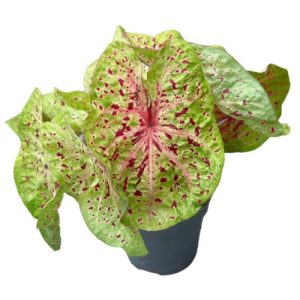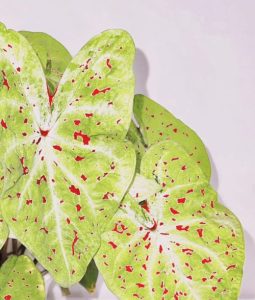- English
- Chinese
- French
- German
- Portuguese
- Spanish
- Russian
- Japanese
- Korean
- Arabic
- Irish
- Greek
- Turkish
- Italian
- Danish
- Romanian
- Indonesian
- Czech
- Afrikaans
- Swedish
- Polish
- Basque
- Catalan
- Esperanto
- Hindi
- Lao
- Albanian
- Amharic
- Armenian
- Azerbaijani
- Belarusian
- Bengali
- Bosnian
- Bulgarian
- Cebuano
- Chichewa
- Corsican
- Croatian
- Dutch
- Estonian
- Filipino
- Finnish
- Frisian
- Galician
- Georgian
- Gujarati
- Haitian
- Hausa
- Hawaiian
- Hebrew
- Hmong
- Hungarian
- Icelandic
- Igbo
- Javanese
- Kannada
- Kazakh
- Khmer
- Kurdish
- Kyrgyz
- Latin
- Latvian
- Lithuanian
- Luxembou..
- Macedonian
- Malagasy
- Malay
- Malayalam
- Maltese
- Marathi
- Mongolian
- Burmese
- Nepali
- Norwegian
- Pashto
- Persian
- Punjabi
- Serbian
- Sesotho
- Sinhala
- Slovak
- Slovenian
- Somali
- Samoan
- Scots Gaelic
- Shona
- Sindhi
- Sundanese
- Swahili
- Tajik
- Tamil
- Telugu
- Thai
- Ukrainian
- Urdu
- Uzbek
- Vietnamese
- Welsh
- Xhosa
- Yiddish
- Yoruba
- Zulu
- Kinyarwanda
- Tatar
- Oriya
- Turkmen
- Uyghur

Whānui te whakamahi i roto, o waho, Caladium is an attractive plant distinguished by its vivid leaves. Caladium’s unusual appeal stems from the variety and vivid hues of its leaves—from green, crimson, pink to white, varied colors are entwined to provide a rich visual impact. Caladium’s growth patterns, however, suggest that its care strategies for various seasons need for particular attention—especially in winter. Caladium will become dormant when the temperature decreases, so winter care is very crucial.

Te Raspberry Raspberry Marama
Caladium’s growing patterns and winter traits
Native to Brazil and Guyana in South America, caladium is a tropical and subtropical plant. Caladium grows very luxuriantly in warm circumstances as its native home has a warm and humid temperature. Caladium is particularly sensitive to temperature variations, however. Its development rate will slow down greatly and progressively go into a dormant condition when the temperature falls below 15 degrees Celsius. In winter, the temperature is low and the light time is limited; Caladium’s development usually stops and calls for particular care to preserve its health.
Te whakahaeretanga o te pāmahana
One of the main elements influencing Caladium’s care is the winter temperature management. Calamus grows best between 18℃ to 26℃, hence low temperatures in winter might have a major effect on the plant. Calamus may wither, become yellow or even fall off if it is in a long-term climate below 15℃. Consequently, especially care should be given to provide calamus a cozy winter growing habitat.
Te Whakahaere i te pāmahana o roto: Me whakanohohia te glalas ki roto, ka tohutohuhia kia mau tonu te pāmahana o roto i te po i te wa e heke ana te pāmahana me etahi atu taputapu whakahiato.
Ko te kaoka e tika ana kia puritia mai i te Matapihi me nga tatau tae atu ki etahi atu waahanga ka taea te pa ki te hau makariri makariri. Whakaora tere i te pāmahana e karapoti ana i te tipu, ka kino pea te mate o te makariri.
Ko te whakaranu o te whakato, ki te whakauru ranei i te papanga hei tiaki i te tipu mai i te pāmahana iti i te ahiahi makariri mena ka tukuna te gomus ki waho, ki te taupee ranei.
Te mana whakahaere
Plants cannot photosynthesize without light, so it is their fundamental requirement. Calamus’s photosynthetic efficiency is thus lowered in winter when the daylight hours are limited and the light intensity is somewhat feeble. In this circumstance, the caladium’s leaves are likely to wilt and become dull. Consequently, maintaining caladium also depends much on light control in winter.
Nukuhia te caladium ki tetahi waahi me te nui o te maama, ano he matapihi ki te tonga, ki te whakatika i te maama taiao i te takurua. E tohutohuhia ana nga rama whakakikoruatia kia pai ai te maarama o roto kia 8 haora te marama ia ra, me te roa o te ao.
Steer clear of strong direct light even if the sunshine is gentler in winter as it could burn caladium’s foliage. Calcium should therefore be avoided even in winter from being positioned near a window with direct sunlight. To change the light brightness, curtains or blinds are ideal.
Te ture o te haumākū me te whakainu
Caladium like a humid climate, although in winter the plant’s evaporation rate slows down and water requirement lowers as well. Water collection at the roots and even root rot might result from watering still done at the frequency during the growth stage. Consequently, the frequency and volume of watering in winter must be changed in line.
Ko te whakainu kia iti ake te maha o te takurua i te wa e ngoikore ana te kowhatu o te tae o te tae me te hiahia. I te nuinga o te waa, ka maroke te whenua, ko te iti noa o te wai e hiahiatia ana hei aukati i te horoi-kore.
Whakahaerehia te wai: I nga wa katoa e wai ana koe, whakaarohia te mana wai me te whakarite kia maroke te oneone kaore he papa wai. Ka nui rawa te makuku ka raru ai nga pakiaka hei manawa, ka puta he pirau pakiaka.
Te pupuri i te hau humanga hau: Ka pai te tipu o te kowhatu i te hau ma te hau i te takurua. Ko te kohu waiu, he kohu wai ranei i whakamarokehia i te tipu ka awhina koe ki te pupuri i te hau hau. Ko te maamaa o te maka i te tipu e tata ana ki te whakamahana maroke kia kore ai te hau maroke.
Tuhinga o mua
Winter is the dormant season of the color leaf calamus; plant metabolic activity declines and nutritional requirement also declines. It is advised not to fertilize too much during this time; otherwise, it is simple to ruin the fertilizer and compromise the plant’s health.
I te nuinga o te takurua, ka mutu pea te tarutaru o te tae tae noa ki te tiimata ka tiimata mai nga puku hou i te puna o te tau e whai ake nei.
Ko te pupuri tonu i te oneone pai he mea nui tonu ahakoa mena ka whakahekehia te pakiaka o te rau rau karakara i te takurua. Ko te whakatuwhera i te oneone e tika ana ka piki ake te ngoikore me te awhina i te kino o te punaha pakiaka ma te kore o te hāora.
Te tiaki i te CALDIUM LOF CALDIM I TE AIBAMATE
Ko te CALDIum Leaf karakara ka tino whaaia i te takurua, he rautaki tiaki-whaiaro mo te tipu ki te tipu haere o te tipu o te tipu. Ko te reanga whanaketanga o te karakara o te rau tae ka huri haere i tenei wa, na reira ka taea e nga rau te maroke. Koinei te ahuatanga o te kaupapa ahupūngao angamaheni ki te whakaheke i nga whakapaunga kaha. Ko nga mahi tiaki tika ka taea e te caladium tae te pai ki te tuku i te waahanga whakararo me te whakaara ano i te tipu o te puna o te tau e whai ake nei.
Kaore i te whakaarohia kia tapahia nga rau o te rau rau karakara i te takurua. Ahakoa ahakoa ko etahi rau ka maroke, ko enei mea noa iho, ka whakarato i etahi paruru mo te tipu ka taea ai e te hotoke.
Te whakaū i te pūmautanga o te taiao: Ahakoa he rereke te taiao i te takurua, he iti noa te urupa o te kowhatu o te rau kikorangi ki nga taiao. Hei aukati i nga huringa taiao e raru ana i te tipu, ngana ki te pupuri i te pāmahana pāmahana, te makuku, me te maama tonu.
Though winter is a dormant season, you still need routinely monitor the caladium’s condition, particularly with regard to changes in the roots and leaves. Once an issue like root rot or aberrant yellowing of leaves is discovered, it should be addressed gradually.
Te whakarite mo te ora kotahi ka mutu te hotoke
The caladium will likewise awaken from hibernation when winter finishes and the temperature progressively increases. Normal care should be progressively reintroduced at this point to be ready for the caladium’s explosive spring development.
Ka whakapiki haere i te waa marama o te calodium kia taea ai te whakahoki mai i te whakaahua i te puna ka tae mai te puna.
Normal watering and fertilization should be progressively resumed when new buds emerge to provide enough nutrients to maintain the plant’s development.
Timely repotting: Should the caladium’s roots occupy the pot, you may spring-time repot it to provide extra growing area and supply new soil to foster good development.

Caladium
Me ona rau pai me ona momo momo, ko te Caladium gives the space a distinctive ornamental impact; yet, its winter maintenance calls for particular attention. By means of suitable temperature control, appropriate light management, scientific watering and humidity control, and careful fertilizer and soil management, the caladium may effectively survive the winter dormant period and recover fresh vigor in the spring of the next year. Good winter maintenance not only preserves the caladium’s health but also provides a strong basis for its springtime fast expansion.
Previous News
Te tipu o te tipu o Sansevieria MaonshineNext News
Ko nga tipu Calathea te tipu o roto


